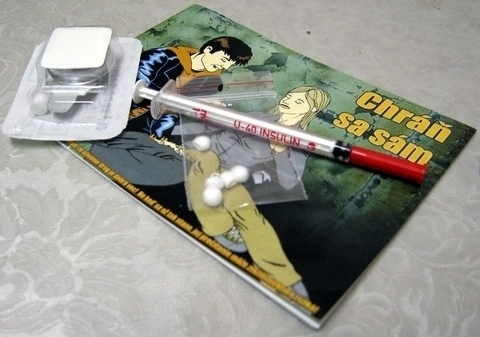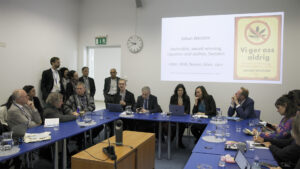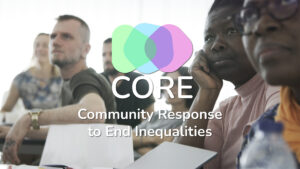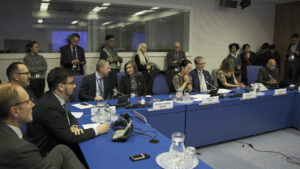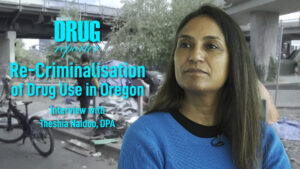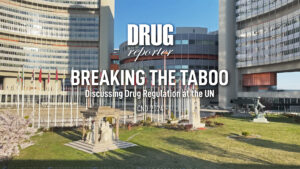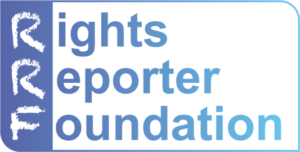In Slovakia, the cost/benefit analysis carried out on a needle and syringe exchange program showed that every euro invested in C.A. Odyseus´s harm reduction program generated benefits worth almost three euros. Read what the figures show about why it’s worthwhile investing in harm reduction!
The Odyseus NGO in Slovakia, founded in 1997, has been running a harm reduction needle and syringe program (NSP) in Bratislava, the capital city, for more than 17 years. Odyseus is one of four non-governmental organisations providing needle and syringe exchange programs in Slovakia. Each year, Odyseus works with approximately 1,000 injecting drug users and sex workers, and distributes around 140,000 sterile syringes, while collecting around 100,000 used syringes in exchange.
Taking into account the program´s costs, C.A. Odyseus´s harm reduction program creates a benefit of almost 174,000 euros per year.
Every year, harm reduction NGOs struggle with the lack of funding and political will. After many years of operation, harm reduction is still often perceived by the general public as “promoting drug use”, causing harm reduction programs to remain underfunded by the state and its agencies.
In order to refute the myths around harm reduction, Odyseus joined a pro bono program run by Pontis foundation in 2014. Odyseus provided its data and budget information to the pro bono volunteers from The Institute for Financial Policy (IFP) at the Slovakian Ministry of Finance, in order to examine the efficiency of its needle and syringe exchange programs.
The analysis focused on the costs and benefits of the program, in terms of hepatitis-C prevention (other benefits related to the NSP, such as HIV prevention, were not considered in the evaluation).
According to the IFP analysis, the syringe exchange program prevented 18% of new hepatitis-C infections in 2014, which, based on conservative estimates using the official statistics, represents 2.5 infections. Odyseus, however, cautions that the official statistics in our view underestimate the number of new Hepatitis-C cases, since the real number of cases probably exceeds the number reported. Even so, every case of infection which is prevented will create a benefit of almost 106,000 euros over the next 25 years, mainly through savings in treatment costs and improved quality of life. Last year, the overall budget of the program came to 90,000 euros. An additional financial challenge is that the Odyseus budget is set on a one-year basis, and often does not cover administration costs.
Watch Drugreporters’ recent video on the Slovakian situation:
Every euro invested in C.A. Odyseus´s harm reduction syringe exchange program generated benefits worth almost three euros
 According to the IFP´s estimates, the harm reduction needle and syringe program of Odyseus is highly cost-effective. Benefits outweigh program costs by a ratio of 2.9:1. Every euro invested generated benefits worth almost three euros. The internal rate of return of the program is 16% – international organisations recommend pursuing public investments with a return of more than 3.5 to 5%.
According to the IFP´s estimates, the harm reduction needle and syringe program of Odyseus is highly cost-effective. Benefits outweigh program costs by a ratio of 2.9:1. Every euro invested generated benefits worth almost three euros. The internal rate of return of the program is 16% – international organisations recommend pursuing public investments with a return of more than 3.5 to 5%.
Besides the financial cost-effectiveness of Odyseus’ harm reduction program, it creates other benefits which were not taken into account during this analysis. These include the prevention of HIV and other infections, and benefits related to outreach work as such. It is worth mentioning that harm reduction programs usually represent the first contact point where non-judgmental support is provided for people who inject drugs in Slovakia.
Of course, the IFP´s analysis also points out several issues to think about – for example the need to expand the program, so that it can reach more people, especially the young ones who inject drugs, and the need to increase the number of collected used syringes.
However, such expansion cannot happen, so long as organisations such as Odyseus continue to struggle every year for financial survival. We believe this analysis brings hope for a systematic change in funding harm reduction programs. It shows that investments in harm reduction are pragmatic and useful in everyday life as well as in the long term. What is needed, though, is for state and local governments to invest in harm reduction programs.
Iveta Chovancová, Miroslava Žilinská (C.A. Odyseus)
Martin Filko, Martina Hojčková, Juraj Mach, Libor Melioris (IFP)
